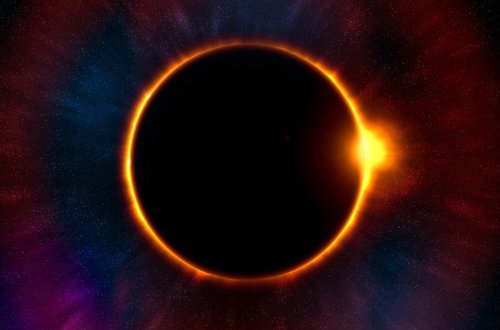On April 8, 2024, North America will witness a rare total solar eclipse as the moon passes between the sun and the Earth, briefly blocking the sun’s rays for several minutes and darkening the sky. The sun’s outer atmosphere, called the solar corona, will gradually appear, glowing like a halo around the moon in front of it. In addition, bright stars and planets become more visible in the sky.
The path of this upcoming eclipse will enter the United States in Texas and pass right through Dallas. Click here to see the path of totality and predicted start times from NASA. Those outside the path of totality will see a partial solar eclipse, where the moon appears to take a bite out of the sun.
Be Careful — Solar Energy Can Damage Your Eyes
While watching a solar eclipse can be an exciting and memorable experience, doing so without proper precautions or eye protection can permanently damage your retina. Solar retinopathy, a form of blindness, is a condition that occurs when image-sensing photoreceptors are destroyed following initial damage to the retina and adjacent tissue. The injury is like thermal burns that can be caused by a laser. Depending on the extent of the injury, people have suffered temporary vision loss, residual blurring and/or distortion, or even permanent vision loss. In some cases, exposure causes people to develop macular holes, perforations in the central part of the retina called the macula. These can damage the central vision needed for reading and recognizing faces.
How to Safely View the Solar Eclipse
According to the American Academy of Ophthalmology (AAO) and NASA, the safest way to look directly at the sun, whether during a solar eclipse or not, is through special-purpose solar filters. These solar filters are used in “eclipse glasses” or in hand-held solar viewers. They must meet a very specific worldwide standard known as ISO 12312-2, which is thousands of times darker than standard sunglasses, and the eclipse glasses or solar viewers should be purchased from reputable manufacturers. According to the American Society of Retina Specialists (ASRS), another commercially available filter deemed safe for solar viewing is shade number 14 welder’s glass, which can be purchased at any reputable welding supply store.
Here are a few additional tips from the AAO and ASRS to safely enjoy the upcoming eclipse:
- Carefully look at your solar filter or eclipse glasses before using them. If you see any scratches or damage, do not use them.
- Always read and follow all directions that come with the solar filter or eclipse glasses. Help children to be sure they use handheld solar viewers and eclipse glasses correctly.
- Before looking up at the bright sun, stand still and cover your eyes with your eclipse glasses or solar viewer. After glancing at the sun, turn away and remove your filter—do not remove it while looking at the sun.
- The only time that you can look at the sun without a solar viewer is during a total eclipse. When the moon completely covers the sun’s bright face and it suddenly gets dark, you can remove your solar filter to watch this unique experience. Then, as soon as the bright sun begins to reappear very slightly, immediately use your solar viewer again to watch the remaining partial phase of the eclipse.
- Never look at the uneclipsed or partially eclipsed sun through an unfiltered camera lens, telescope, binoculars, sunglasses, polarizing filters or neutral-density films, or other similar devices. This is important even if you are wearing eclipse glasses or holding a solar viewer at the same time. The intense solar rays coming through these devices will damage the solar filter and your eyes.
We encourage you to safely enjoy the upcoming total solar eclipse as it is a rare cosmic phenomenon, and the next one won’t occur until August 23, 2044. If you should experience any vision changes during or following the viewing of the eclipse, immediately contact your Texas Retina specialist.


